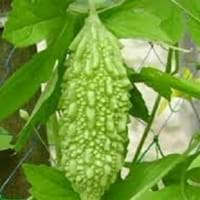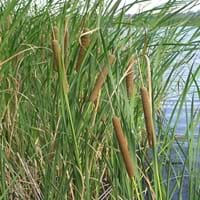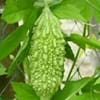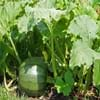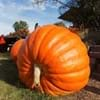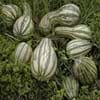Life Span
Annual
Perennial
Origin
North America, Mexico, Central America
North America, United States, Northeastern United States, Mid-Atlantic United States, Southeastern United States, North-Central United States, Central United States, Western United States, California, Canada
Types
Not Available
Not Available
Number of Varieties
Not Available
Habitat
Loamy soils, Moist Soils, Subtropical climates
Bog Garden, Ponds
USDA Hardiness Zone
5-7
3-10
Sunset Zone
A1, A2, A3, H1, H2, 1a, 1b, 2a, 2b, 3a, 3b, 4, 5, 6, 7, 8, 9, 10, 11, 12, 13, 14, 15, 16, 17, 18, 19, 20, 21, 22, 23, 24
21,22
Habit
Vining/Climbing
Thicket/Colonizing
Flower Color
Yellow, Orange, Dark Green
Light Yellow, Light Green
Flower Color Modifier
Bicolor
Not Available
Fruit Color
Yellow, Dark Green
Brown
Leaf Color in Spring
Green, Dark Green
Green
Leaf Color in Summer
Green, Dark Green
Green
Leaf Color in Fall
Green, Dark Green
Green
Leaf Color in Winter
Not Available
Not Available
Leaf Shape
Palmate
Flat, Narrow
Plant Season
Summer, Fall
Summer, Fall
Sunlight
Full Sun
Full Sun, Partial Sun
Growth Rate
Very Fast
Fast
Type of Soil
Loam, Sand
Loam, Sand
The pH of Soil
Neutral
Acidic, Neutral, Alkaline
Soil Drainage
Well drained
Poorly Drained
Bloom Time
Indeterminate
Early Summer, Summer
Tolerances
Drought
Wet Site
Where to Plant?
Ground
Ground
How to Plant?
Seedlings
Divison, Seedlings
Plant Maintenance
Medium
Medium
Watering Requirements
Keep ground moist, Requires regular watering
Needs Very high moisture
In Summer
Lots of watering
Lots of watering
In Spring
Moderate
Moderate
In Winter
Average Water
Average Water
Soil pH
Neutral
Acidic, Neutral, Alkaline
Soil Type
Loam, Sand
Loam, Sand
Soil Drainage Capacity
Well drained
Poorly Drained
Sun Exposure
Full Sun
Full Sun, Partial Sun
Pruning
Cut out old flower stalks, Prune after flowering, Remove dead or diseased plant parts
Remove damaged leaves
Fertilizers
Apply 10-10-10 amount, Apply 12-12-12 amounts, Nitrogen, Phosphate, Potassium
Nutrient Rich Fertilizer
Pests and Diseases
Aphids, Army-worms, Bacteria wilt, Bacterial leaf spot, Blight, Cucumber beetles, Cutworms, Fusarium leaf spot, Red spider mite
Free of serious pests and diseases
Plant Tolerance
Drought, Full Sun, Salt and Soil Compaction
Drought
Flower Petal Number
Single
Not Available
Foliage Texture
Coarse
Coarse
Foliage Sheen
Matte
Glossy
Attracts
Bees, Flies, Flying insects
Wildlife
Allergy
Hypoglycaemic Coma, Irregular Heart Rhythm, Miscarriage
Mild Allergen
Aesthetic Uses
Not Used For Aesthetic Purpose
Cut Flowers, Wild gardens
Beauty Benefits
Acne, For treating wrinkles, Improve hair condition, Nourishes scalp, Removes dandruff
Not Available
Environmental Uses
Food for animals, Insect Repellent
Air purification
Medicinal Uses
Anti-fungal, Detoxification, Diabetes, Gastrointestinal disorders, Weight loss
anticoagulant, Diuretic, Haemostatic, Miscellany
Part of Plant Used
Fruits
Flowers, Leaves, Root, Seeds, Stem
Other Uses
Cosmetics, Repellent, Use in Chinese herbology
Used as a thickener in soups, Used to make biscuits, Used to produce edible oil, Used to yield a sweet syrup
Used As Indoor Plant
No
No
Used As Outdoor Plant
Yes
Yes
Garden Design
Dried Flower/Everlasting, Vine
Dried Flower/Everlasting, Wildflower
Botanical Name
CUCURBITA pepo 'Bicolor Pear'
TYPHA angustifolia
Common Name
Bicolor Pear Gourd, Ornamental Gourd
Narrowleaf Cattail, Lesser Reedmace
In Hindi
करेला
Narrowleaf Cattail
In German
Bittermelone
Schmalblättriger Cattail
In French
Momordica charantia
Narrowleaf Cattail
In Spanish
Momordica charantia
Espadaña de hoja estrecha
In Greek
Not Available
στενόφυλλα Cattail
In Portuguese
Momordica
Narrowleaf Tifa
In Polish
Przepękla ogórkowata
Wąskolistne Cattail
In Latin
Not Available
Cattail glaucescens
Phylum
Spermatophyta
Magnoliophyta
Class
Magnoliopsida
Liliopsida
Family
Cucurbitaceae
Typhaceae
Clade
Not Available
Angiosperms, Commelinids, Monocots
Tribe
Not Available
Not Available
Subfamily
Cucurbitoideae
Not Available
Number of Species
Not Available
Season and Care of Bitter Gourd and Narrowleaf Cattail
Season and care of Bitter Gourd and Narrowleaf Cattail is important to know. While considering everything about Bitter Gourd and Narrowleaf Cattail Care, growing season is an essential factor. Bitter Gourd season is Summer and Fall and Narrowleaf Cattail season is Summer and Fall. The type of soil for Bitter Gourd is Loam, Sand and for Narrowleaf Cattail is Loam, Sand while the PH of soil for Bitter Gourd is Neutral and for Narrowleaf Cattail is Acidic, Neutral, Alkaline.
Bitter Gourd and Narrowleaf Cattail Physical Information
Bitter Gourd and Narrowleaf Cattail physical information is very important for comparison. Bitter Gourd height is 60.00 cm and width 90.00 cm whereas Narrowleaf Cattail height is 120.00 cm and width 240.00 cm. The color specification of Bitter Gourd and Narrowleaf Cattail are as follows:
Bitter Gourd flower color: Yellow, Orange and Dark Green
Bitter Gourd leaf color: Green, Dark Green
Narrowleaf Cattail flower color: Light Yellow and Light Green
- Narrowleaf Cattail leaf color: Green
Care of Bitter Gourd and Narrowleaf Cattail
Care of Bitter Gourd and Narrowleaf Cattail include pruning, fertilizers, watering etc. Bitter Gourd pruning is done Cut out old flower stalks, Prune after flowering and Remove dead or diseased plant parts and Narrowleaf Cattail pruning is done Remove damaged leaves. In summer Bitter Gourd needs Lots of watering and in winter, it needs Average Water. Whereas, in summer Narrowleaf Cattail needs Lots of watering and in winter, it needs Average Water.
